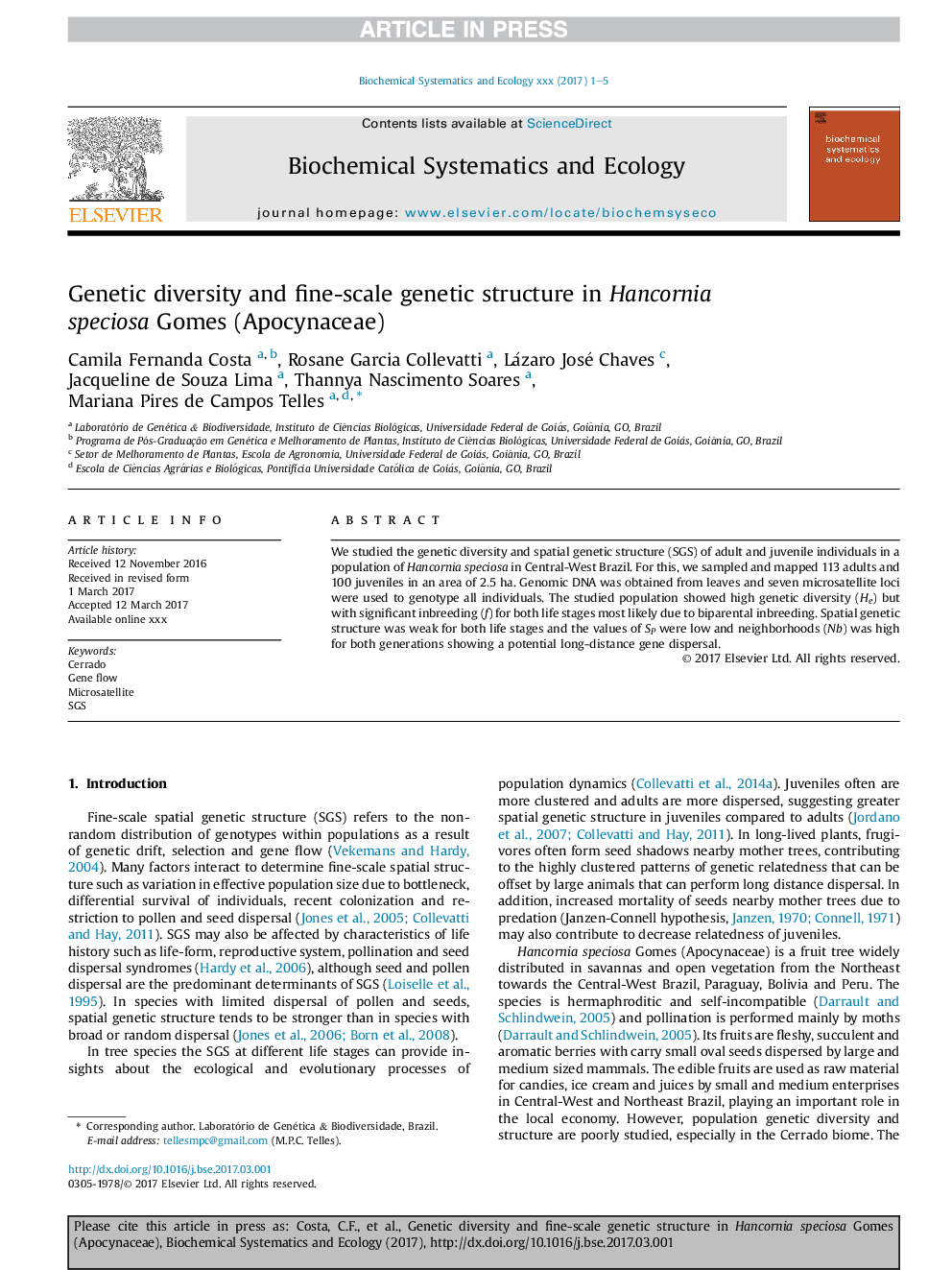| Article ID | Journal | Published Year | Pages | File Type |
|---|---|---|---|---|
| 5154919 | Biochemical Systematics and Ecology | 2017 | 5 Pages |
Abstract
We studied the genetic diversity and spatial genetic structure (SGS) of adult and juvenile individuals in a population of Hancornia speciosa in Central-West Brazil. For this, we sampled and mapped 113 adults and 100 juveniles in an area of 2.5Â ha. Genomic DNA was obtained from leaves and seven microsatellite loci were used to genotype all individuals. The studied population showed high genetic diversity (He) but with significant inbreeding (f) for both life stages most likely due to biparental inbreeding. Spatial genetic structure was weak for both life stages and the values of SP were low and neighborhoods (Nb) was high for both generations showing a potential long-distance gene dispersal.
Keywords
Related Topics
Physical Sciences and Engineering
Chemistry
Organic Chemistry
Authors
Camila Fernanda Costa, Rosane Garcia Collevatti, Lázaro José Chaves, Jacqueline de Souza Lima, Thannya Nascimento Soares, Mariana Pires de Campos Telles,
